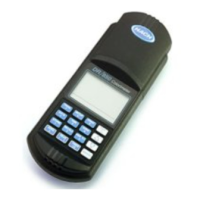59
WASTE MANAGEMENT AND SAFETY, continued
Characteristic Hazardous Waste Codes
Hazardous wastes are categorized by specific codes assigned in 40 CFR
261.20-261.33. These codes will help you identify hazardous waste. The
generator is responsible for making the actual waste code determination.
Selected characteristic waste codes for chemicals which may be generated
using Hach methods for water analysis are given in the following table. A
complete list of waste codes is found in 40 CFR 261.24.
How to Determine if Waste is Hazardous
Federal laws do not require you to test a material to decide if it is a
hazardous waste. You may apply product knowledge to decide if a
material is hazardous. Often, information on a material safety data sheet
(MSDS) is enough to decide. If the product is specifically listed in the
regulation, it is a hazardous waste.
You also need to decide if it has any characteristics of a hazardous waste.
Physical information on the MSDS may help you decide. If the flash point
is below 60 °F (15 °C) or is classified by DOT as an oxidizer, the material
may be ignitable. If the pH of the material is ≤2 or ≥12.5, the material
may be corrosive. If the material is unstable, reacts violently with water,
or may generate toxic gases, vapors, or fumes when mixed with water, it
may be reactive.
USEPA Code Characteristic CAS No.
Regulatory Level (mg/
L)
D001 Ignitability na na
D002 Corrosivity na na
D003 Reactivity na na
D004 Arsenic 6440-38-2 5.0
D005 Barium 6440-39-3 100.0
D018 Benzene 71-43-2 0.5
D006 Cadmium 7440-43-9 1.0
D022 Chloroform 67-66-3 6.0
D007 Chromium 7440-47-3 5.0
D008 Lead 7439-92-1 5.0
D009 Mercury 7439-97-6 0.2
D010 Selenium 7782-49-2 1.0
D011 Silver 7440-22-4 5.0

